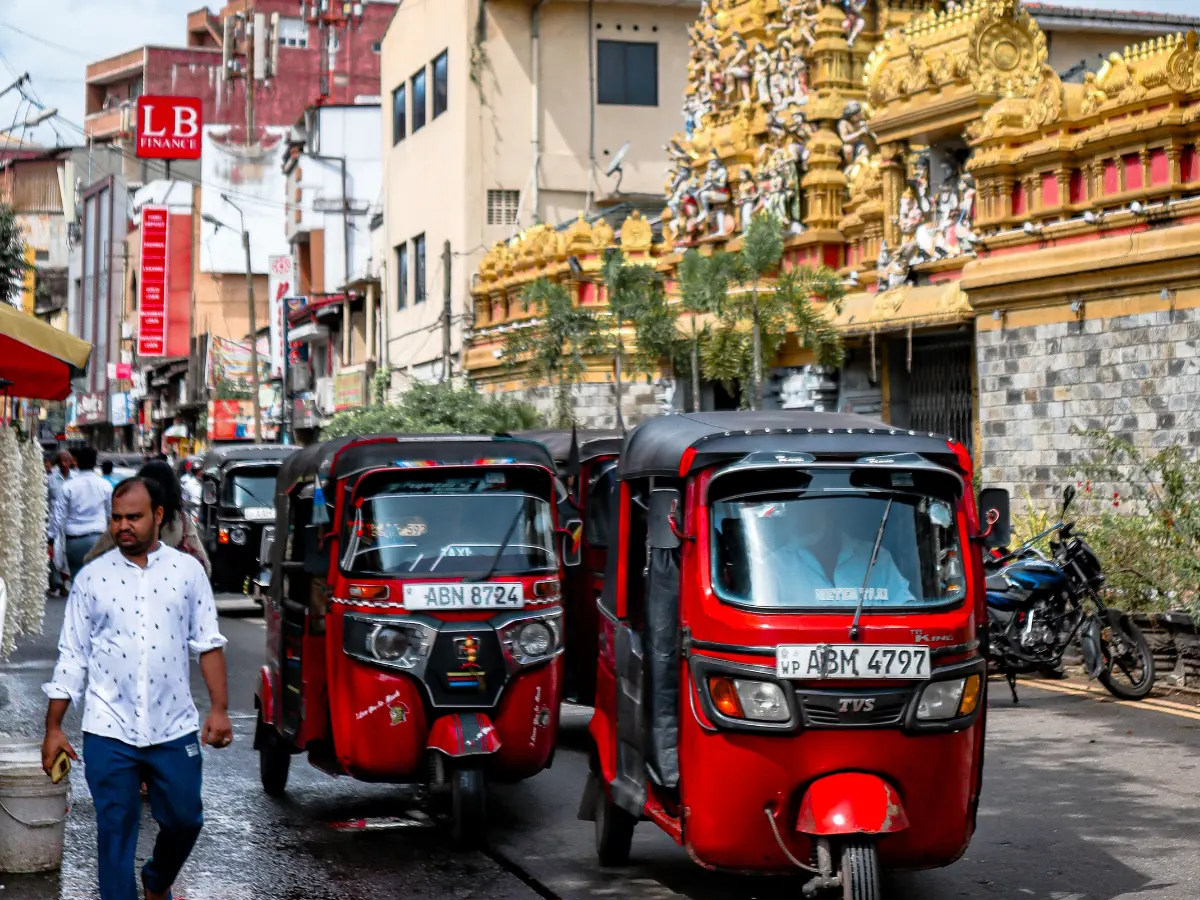Are you planning a trip to Sri Lanka and want to feel fully prepared before you go? Then you’re in the right place.
When I was figuring out how to plan a trip to Sri Lanka, I had a million tabs open, a notebook full of scribbles, and still felt like I was missing something.
After spending 10 days visiting Sri Lanka — from misty tea fields to golden beaches — I learned a lot. Some lessons were fun. Others? Not so much. Like the time I got caught in a classic tuk-tuk scam on our first day and ended up paying 30€ for a random city tour we didn’t even ask for.
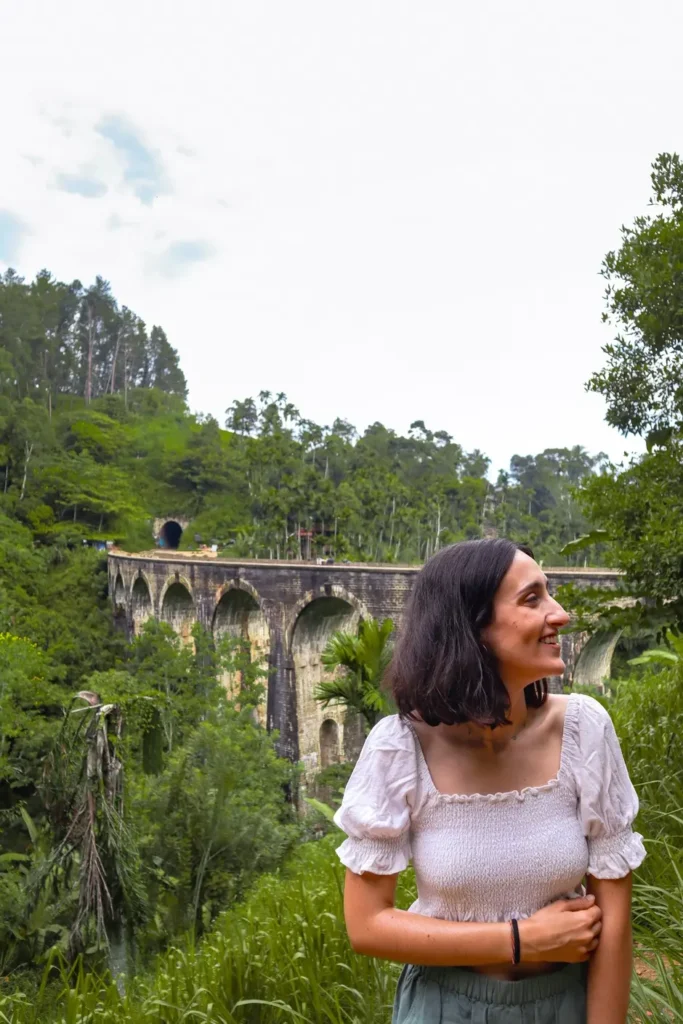
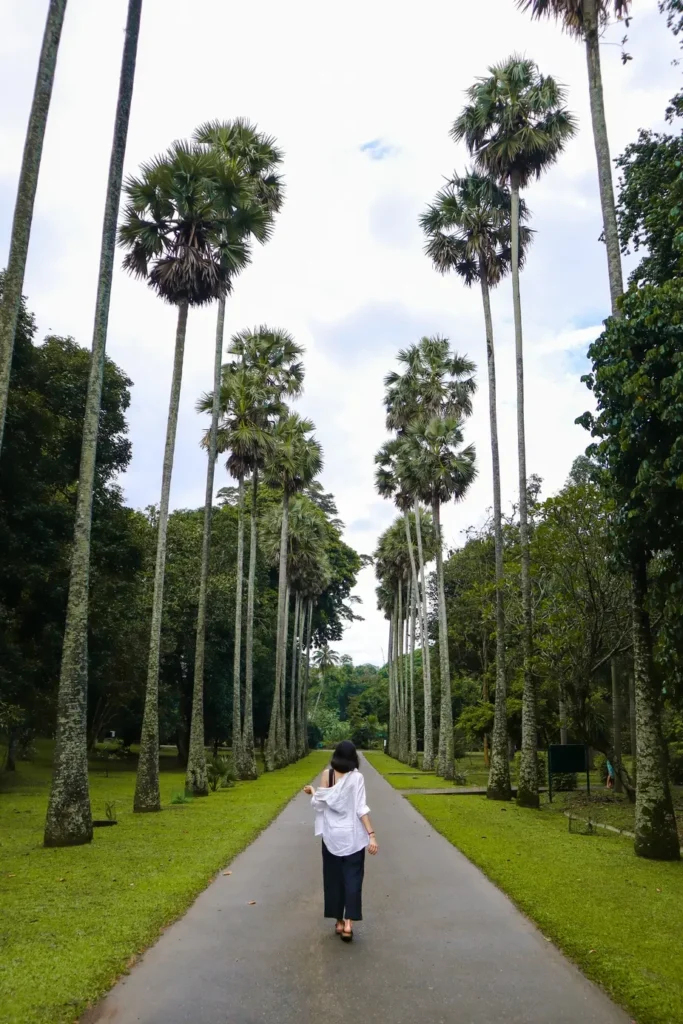
But every experience taught me something I wish I’d known before I arrived.
If you’re dreaming of lush landscapes, elephants in the wild, and sipping tea in the hills — this post is here to help you feel ready.
You’ll find 40 honest, practical, and super useful Sri Lanka travel tips that cover everything from visas and money to cultural etiquette, safety, and getting around Sri Lanka.
Whether you’re a first-timer or just looking for smarter ways to travel, this is your no-fluff, straight-talking guide to planning a smooth and unforgettable trip.
Things to know when planning a trip to Sri Lanka
1. Apply for your Sri Lanka visa online before you travel
The easiest way to enter Sri Lanka is by applying for the Electronic Travel Authorization (ETA) online. It only takes a few minutes and costs 45€/ 50 USD and saves you from standing in extra queues when you land.
Yes, you can get your visa on arrival. But after a long flight, do you really want to be dealing with paperwork in a crowded airport? Trust me — do it online and skip the stress.
💡 EXTRA TIP: Always check the latest visa requirements for your country before traveling to Sri Lanka.
2. Make sure your passport is valid for at least 6 months
This one’s easy to miss, especially if you’re a last-minute packer. But your passport must be valid for at least six months from your date of arrival in Sri Lanka.
Check your expiry date as soon as you start planning. If it’s close, get it renewed in advance.
3. Plan your trip around the monsoon seasons
Sri Lanka has two monsoon seasons, which makes planning a bit tricky. The southwest (like Galle and Mirissa) gets heavy rain from May to September. The northeast (like Trincomalee) sees more rain from October to January.
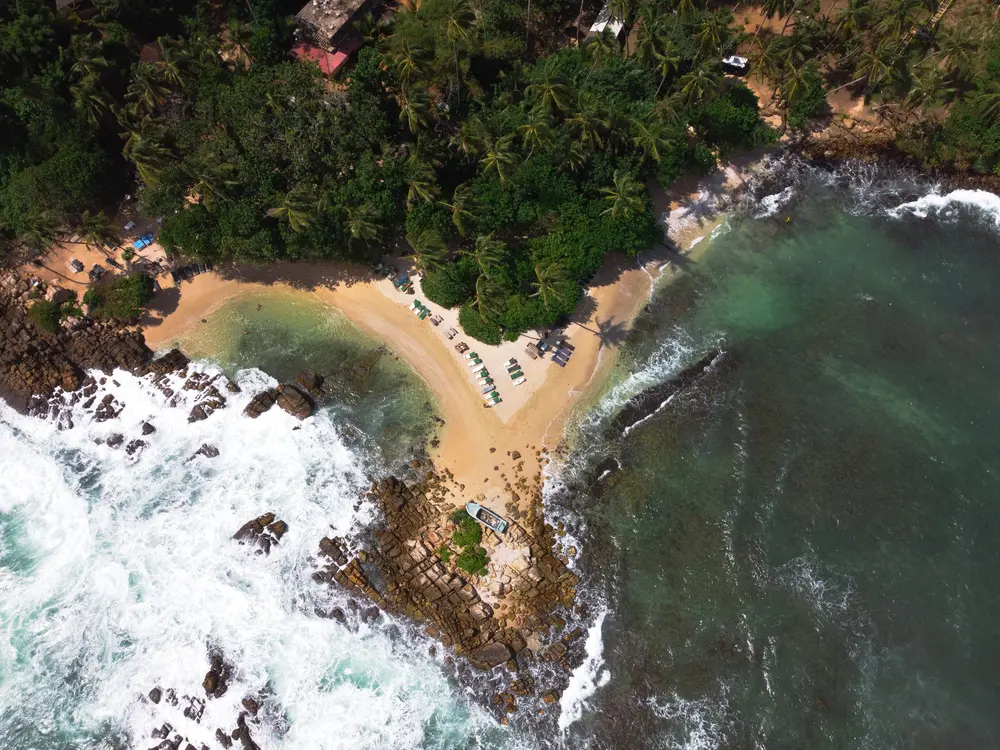
If you’re chasing sunshine, the best time to visit the south and west is between December and April. For the east coast, go between May and September.
One of the biggest things to know before visiting Sri Lanka is that the weather changes a lot depending on where you are — and when you go.
4. Two weeks is ideal, but even 10 days can show you the best of Sri Lanka
If it’s your first time visiting Sri Lanka, I’d say two weeks is ideal. That gives you enough time to explore beaches, temples, tea country, and national parks without rushing.
But I get it — not everyone has that kind of time off. I managed to see the highlights in just 10 days, and it was incredible. If you’re short on time, I’ve written a full 10-day Sri Lanka itinerary to help you make the most of it.
The trick about Sri Lanka isn’t doing everything. It’s about doing the right things — and having a good time while you’re at it.
5. Bring all essential medications with you — don’t count on finding them there
Finding basic stuff like paracetamol is usually fine. But if you need something specific — prescription meds, allergy treatment, birth control, etc. — bring it with you.
Pharmacies in Sri Lanka aren’t always well-stocked, especially outside the big cities. And language barriers can make things even more complicated.
6. Avoid drinking tap water — stick to bottled or filtered water
The water in Sri Lanka isn’t safe to drink straight from the tap. I always stuck to bottled water when I visited. You don’t want to risk ruining your trip over a stomach bug.
And yes, that includes brushing your teeth. I know — it’s not the most practical thing ever. But trust me, using bottled water even for that small routine can make a big difference. It’s a simple habit that can help you avoid days stuck in bed.
7. Carry a sarong or scarf to cover up at religious sites
You’ll visit at least one temple while in Sri Lanka — and most likely, a few. It’s part of the culture, and honestly, they’re beautiful places to slow down and take in the moment.
But you must cover your shoulders and knees when entering religious sites. A lightweight scarf or sarong in your day pack is the easiest solution. You’ll use it more than you think.
This is one of those things to know before going to Sri Lanka that helps you avoid awkward moments and shows respect for local traditions.
8. Remove your shoes and hat before entering temples
It might feel strange at first, but it’s normal here. You’ll need to take off your shoes and even your hat when stepping into temple grounds — not just inside the building.
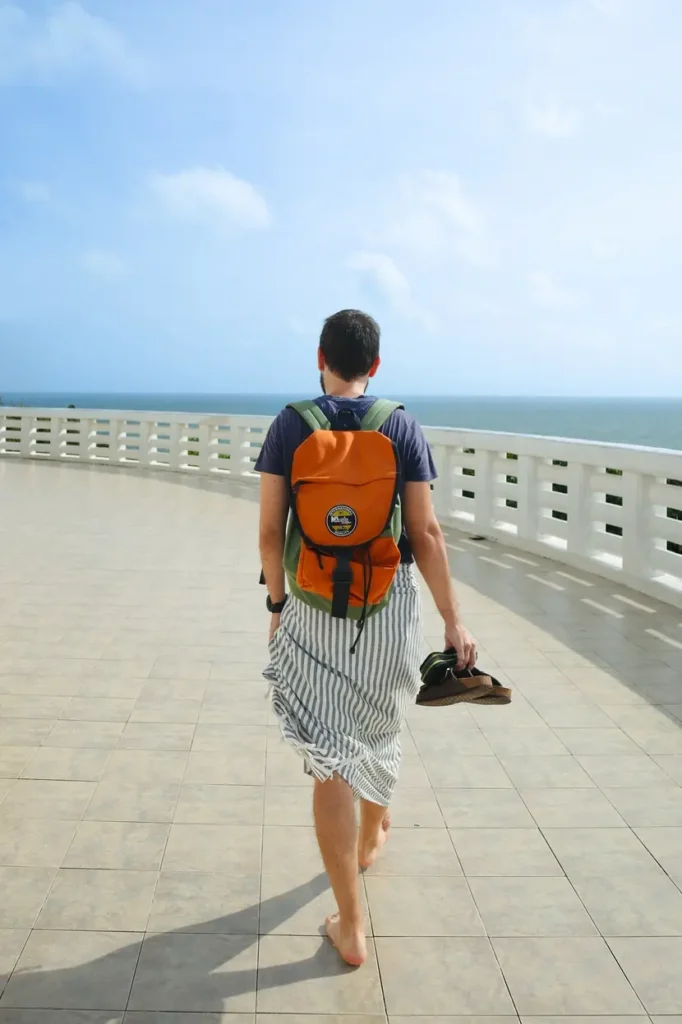

Tip: wear shoes that are easy to slip on and off, because you’ll be doing it a lot. Also, the floor can get hot under the sun — so bring socks if your feet are sensitive (or if you don’t want to touch the floor with your bare feet).
9. Don’t take selfies with your back to Buddha statues
This one’s a big no-no. Even though tourists do it all the time, it’s actually considered deeply disrespectful to pose with your back facing a Buddha statue.
Just don’t do it. Admire the statues, take respectful photos, and move on.
10. Avoid public displays of affection — the culture is conservative
Hand-holding is okay in most places, but anything beyond that — kissing, hugging, cuddling — is best kept private. Even if no one says anything, people will notice. And it can make locals uncomfortable.
If you’re traveling as a couple, just keep things low-key in public spaces. Beaches, restaurants, buses — the same rule applies.
This might feel different depending on where you’re from, but it’s important to remember that visiting Sri Lanka also means respecting how life works there.
11. Expect spicy food — even if you ask for mild
Sri Lankan food? Amazing. But I won’t lie — I got burned more than once. I’d ask for “not spicy,” and the next thing I knew, my mouth was on fire.
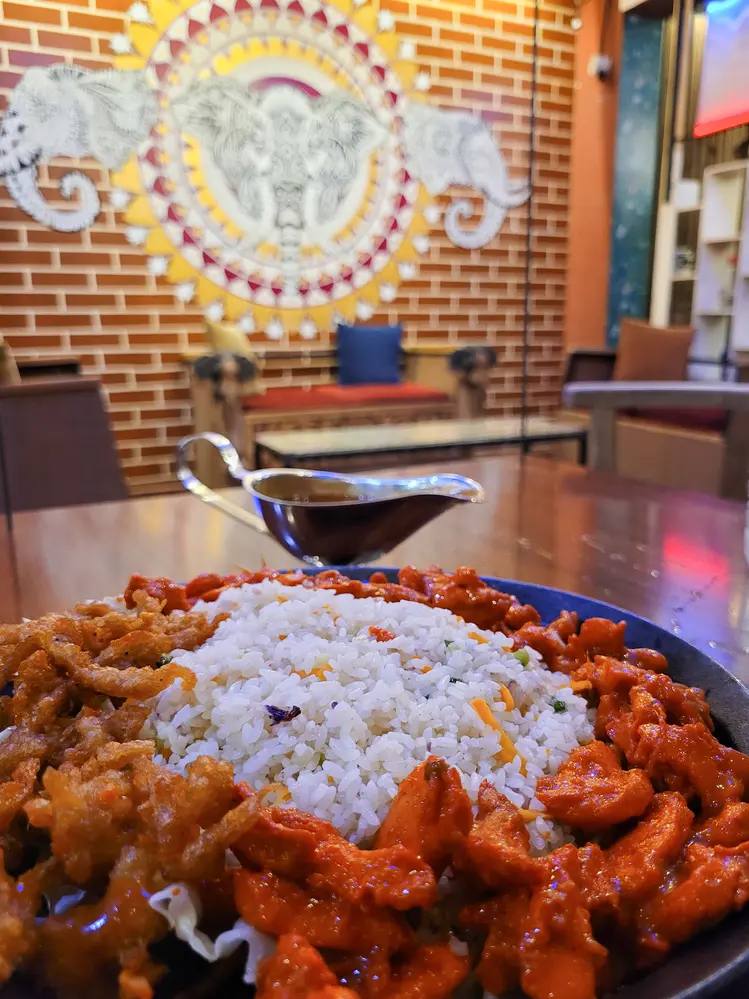
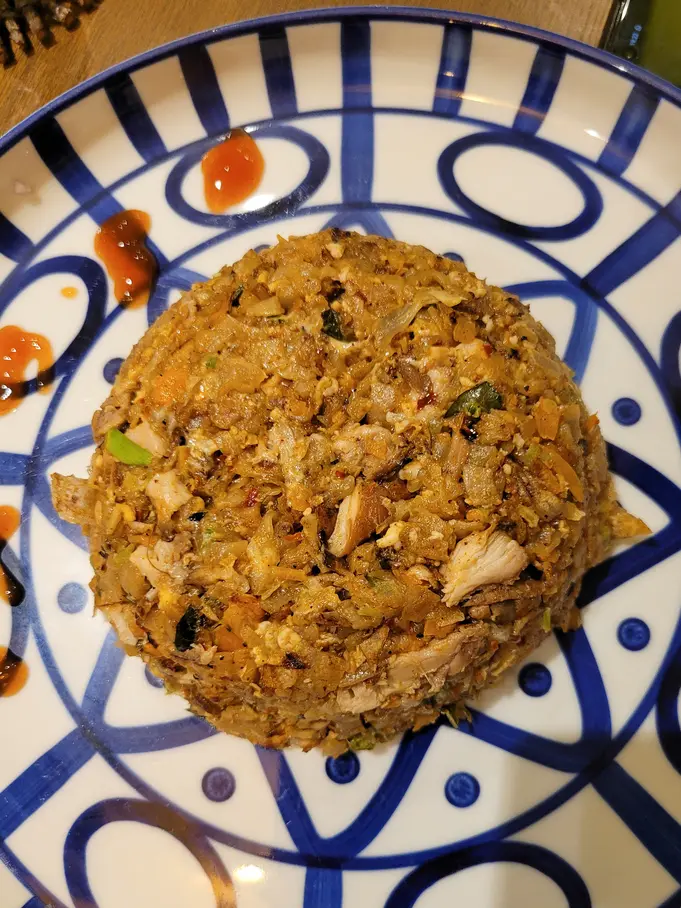
Rice and curry is the go-to meal, and it’s packed with flavor. But their definition of “mild” is… not the same as mine. If you’re spice-sensitive, be aware!
12. Tipping isn’t mandatory, but it’s always appreciated
You don’t need to tip for everything in Sri Lanka. But if someone helps you carry your bags, looks out for your tuk-tuk while you’re out exploring, or goes out of their way to help — a little something goes a long way.
Most people will usually tell how much they want but for services (like tuk-tuk rides), can simply round up the final price or give a few extra rupees.
Even though it’s not required, it’s worth knowing the tipping in Sri Lanka etiquette so you’re not caught off guard.
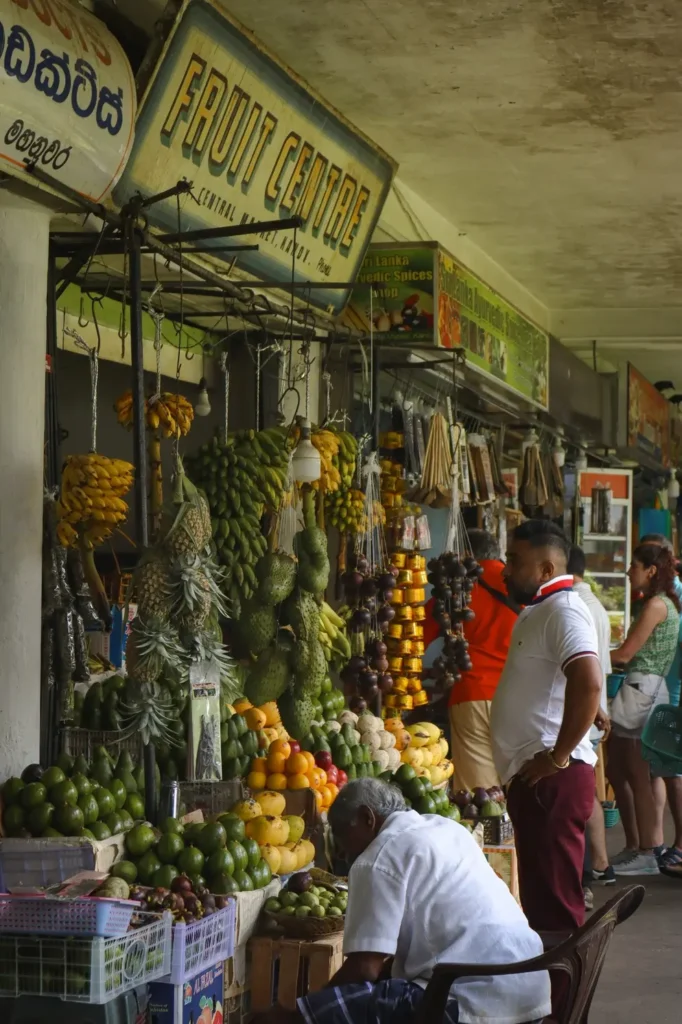
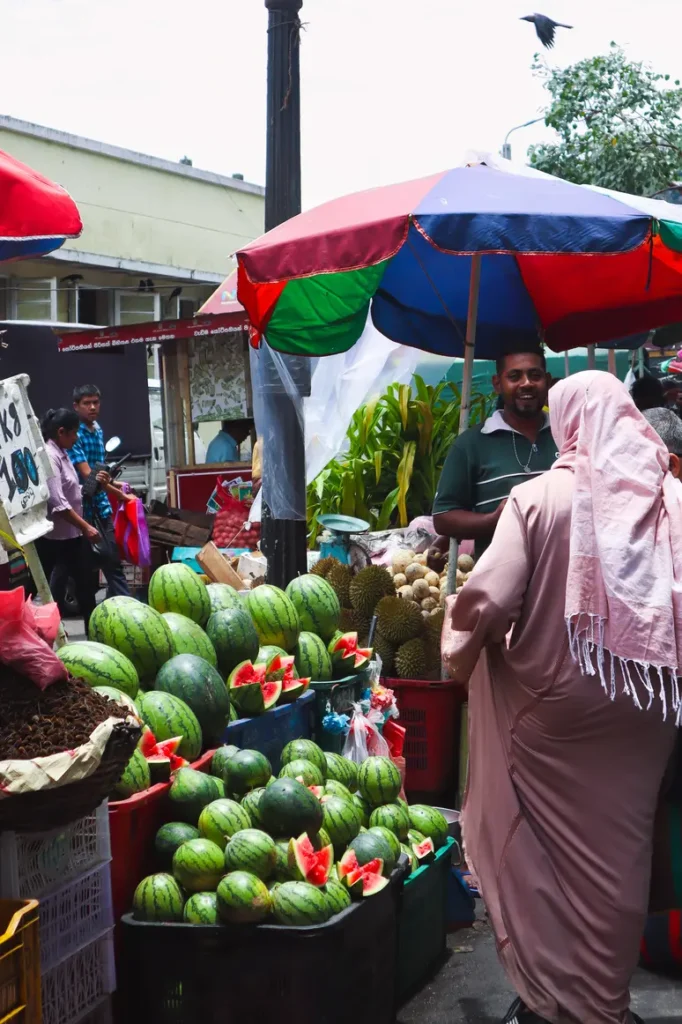
13. Cash is king — always carry small notes with you
Most small shops, markets, and tuk-tuk drivers don’t accept cards — even in bigger towns. Always have cash on you!
Try to break larger bills whenever you can, especially at supermarkets or petrol stations, because smaller vendors often won’t have change.
Understanding this small detail is super helpful when it comes to getting around Sri Lanka and dealing with daily expenses.
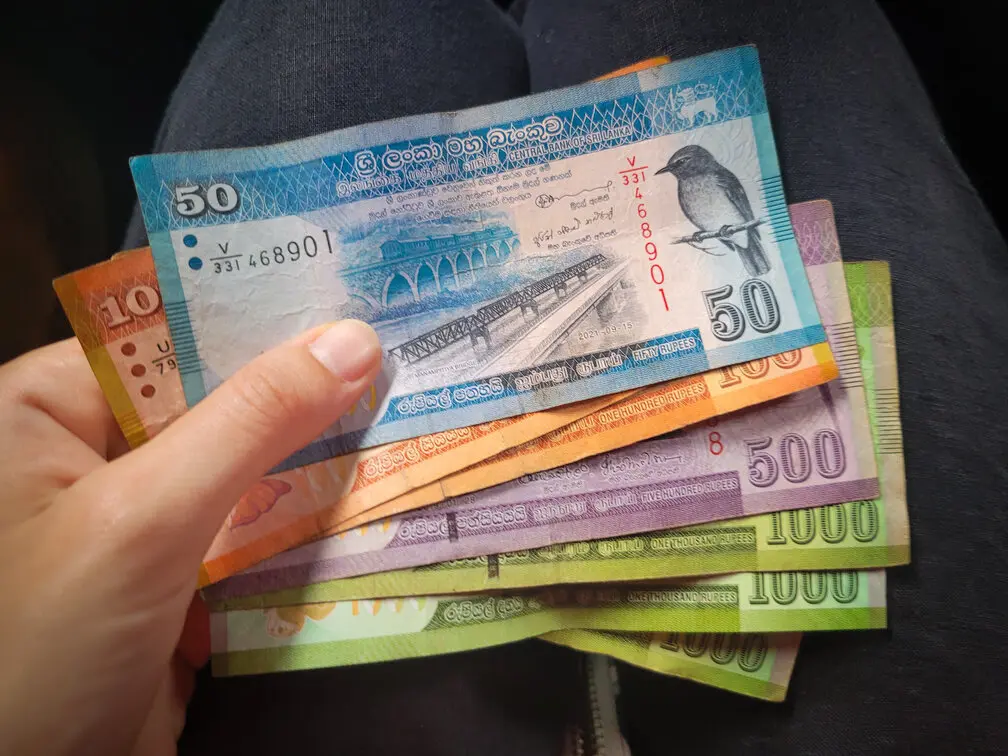
14. ATMs are common in cities, but rare in remote areas
In big towns, you’ll find ATMs easily. But once you’re in smaller villages or national parks — good luck. Always stock up on cash before heading off the beaten path.
Sri Lanka uses the Sri Lankan Rupee (LKR). As of now, 1€ is roughly 319 LKR (1 USD = 296 LKR) — but make sure to double-check the current rate before you go, as it can fluctuate.
To save on fees, use Revolut. I did, and it worked like a charm. And here’s a bonus tip: use Bank of Ceylon ATMs — they don’t charge extra withdrawal fees.
This is one of those practical Sri Lanka tips that can help you save a few bucks (and a few headaches).
15. There’s no alcohol sold on full moon days (Poya Days)
One thing many travelers don’t expect is Sri Lanka’s restriction on alcohol sales during Poya Days — full moon holidays celebrated every month. These are public holidays rooted in Buddhist traditions, and as part of religious observance, the sale and public consumption of alcohol is banned.
This means bars, restaurants, and even shops won’t serve or sell alcohol on those days. It doesn’t matter if you’re in a beach town or the capital — the rules still apply.
Just plan ahead if enjoying a drink is part of your travel vibe. Stock up the day before a full moon or check the local calendar to avoid surprises. You’ll likely still find a nice beach or rooftop to chill — just without beer or a cocktail.
16. Sri Lanka isn’t a party destination — it’s more chill and nature-focused
If you’re picturing beach raves or booming nightlife, you might want to reset your expectations. Sri Lanka isn’t like Thailand or Bali in that sense. Sure, there are bars and music here and there — especially in spots like Mirissa, Arugam Bay, or Unawatuna — but the overall vibe is way more laid-back.

The rhythm here is more about sunrise yoga, early surf sessions, and quiet dinners by the sea. It’s the kind of place where you fall asleep early and wake up with the sun. After a few days, that pace starts to feel really good.
17. Trains are scenic, cheap, and very slow — book in advance
Taking the train in Sri Lanka is an experience in itself — and one you don’t want to miss.
The routes through the Hill Country, especially from Kandy to Ella, are some of the most scenic train rides in the world. Think rolling tea plantations, misty hills, and kids waving from village crossings.
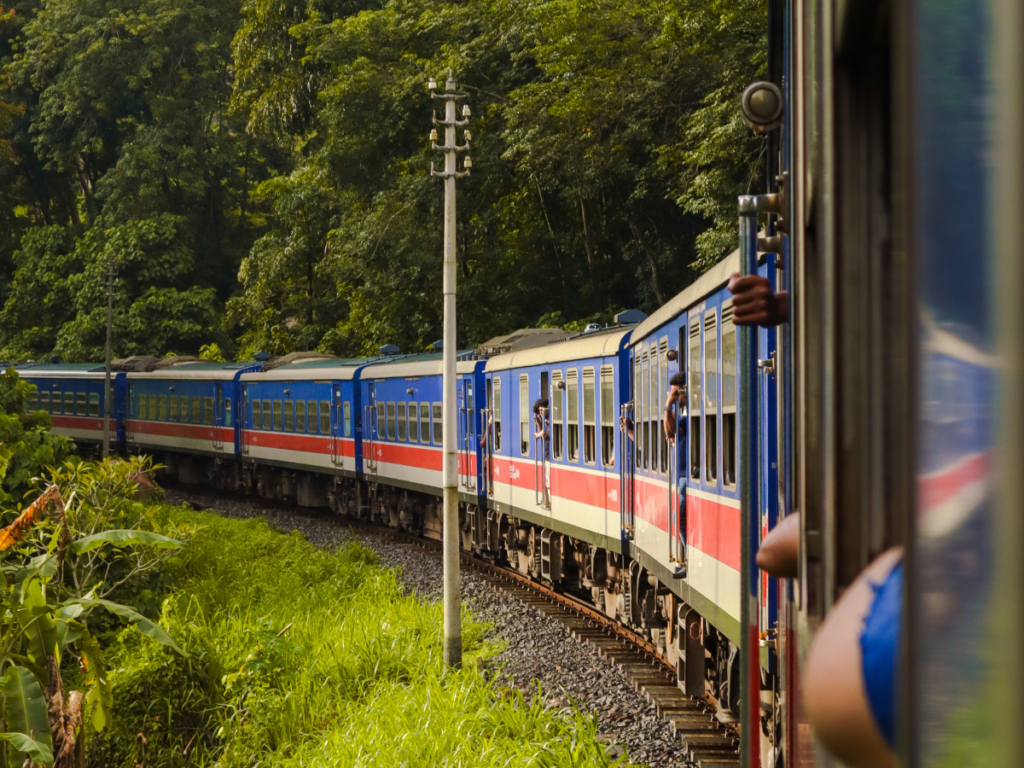

But be warned — these trains are slow. You won’t mind though, because the views more than make up for it. What you should mind, however, is the seating situation. Trains can sell out quickly, especially during high season, and standing for hours isn’t fun.
So book your tickets early, ideally online especially if you want a reserved seat on the famous blue train.
🎫 Planning to take the iconic train ride? Don’t miss my post with all the tips you need for the Ella to Kandy train journey — it’ll make the ride even better!
18. Tuk-tuks are everywhere — always agree on a price before hopping in
Tuk-tuks are iconic in Sri Lanka. They’re fast, fun, and everywhere. For short distances, they’re usually your best bet — but don’t hop in without asking the price first. Most Sri Lankan tuk-tuks don’t have meters, so it’s all about negotiation.

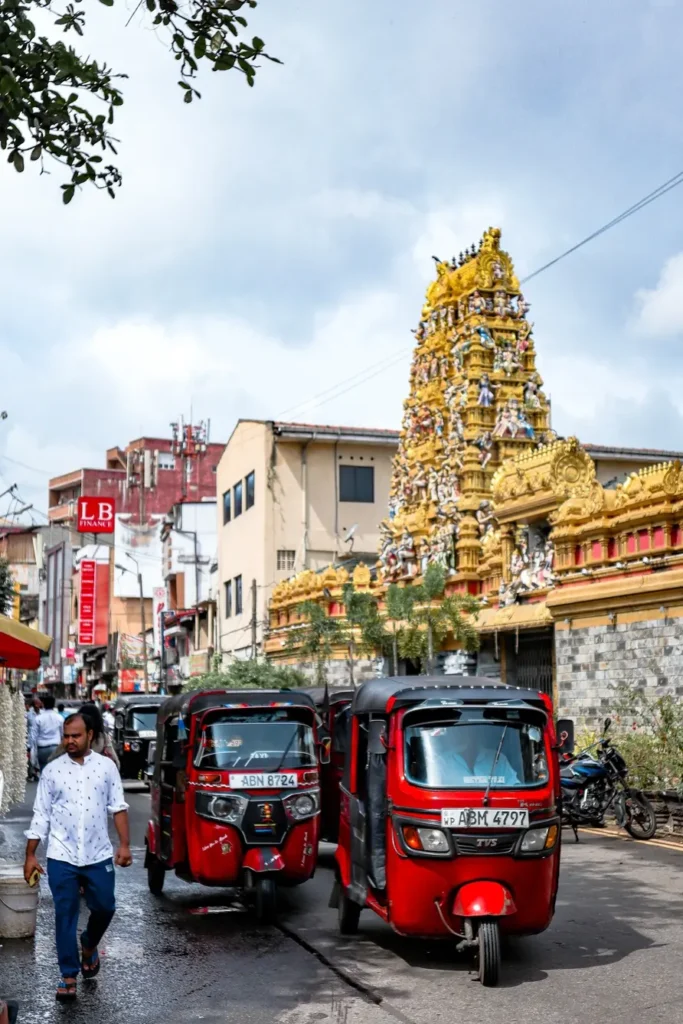
Start by asking locals or your hotel staff what a fair rate is for your route. Once you have a rough idea, always confirm the price with the driver before the ride starts. If they say “no problem, just get in” — that’s your sign to press for a clear number.
It’s not about getting the cheapest price — it’s about avoiding being overcharged. Tuk-tuks are a great way to explore towns or get to nearby beaches. Just stay sharp, and you’ll enjoy the ride without surprises. Trust me, learning how to get around Sri Lanka with confidence makes all the difference.
19. Download the PickMe app — it’s the local Uber alternative
If negotiating tuk-tuk fares isn’t your thing, PickMe will be your best friend. It’s basically the Sri Lankan version of Uber and works really well in cities like Colombo, Kandy, and Galle. You can order tuk-tuks, cars, or vans, and you’ll get a fair price every time — no haggling needed.
The app also gives you fare estimates, payment options (cash or card), and sometimes even English-speaking drivers. It’s super helpful when you’re in a new place and want to avoid confusion. Plus, it adds a layer of safety since your trip details are tracked.
20. Prepare for chaotic traffic and a lot of honking. It turns out to be fun
Traffic in Sri Lanka is… an experience. Picture buses overtaking tuk-tuks overtaking bicycles — all while people walk casually in the middle of the street. The roads are a constant swirl of vehicles, horns, and near-misses. And somehow, it all just flows.
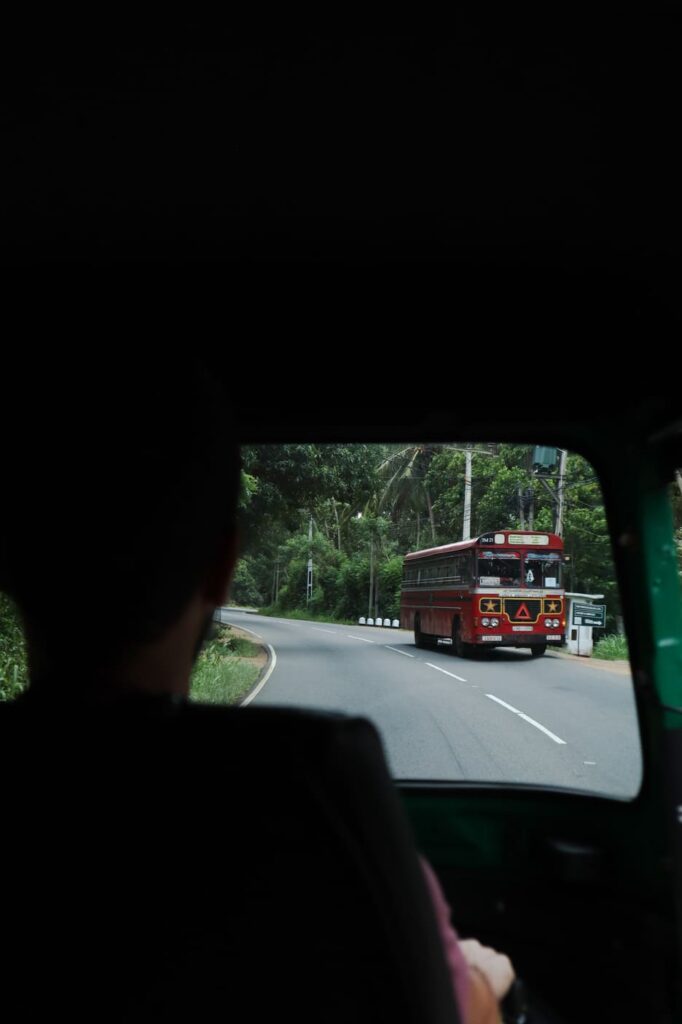

The honking isn’t aggressive — it’s more like a “hey, I’m here” heads-up. Give it a day or two, and you’ll start to feel the rhythm of it. I went from gripping my seat to laughing at the chaos within 24 hours.
It may seem overwhelming at first, but it’s also one of the wild, unforgettable things about being in Sri Lanka. No Sri Lanka tips list would be complete without warning you — but also encouraging you — to embrace it.
21. Stay in locally run guesthouses for a more authentic experience
If you really want to connect with Sri Lanka — its people, food, and way of life — skip the chain hotels and book a family-run guesthouse. I stayed in a few during my trip and they were some of the warmest, most welcoming places I’ve ever experienced.
Hosts often go above and beyond — offering homecooked meals, helping with transport, or just sharing stories over tea. The breakfasts alone are reason enough: fresh fruit, hoppers, dhal, and coconut sambal, all made with love.
It’s a great way to travel more responsibly too. You’re supporting local families instead of big businesses, and in return, you’ll get a more personal, memorable stay.
22. English is widely spoken — but learning a few Sinhala words goes a long way
Most Sri Lankans working in tourism speak English well enough to help with directions, bookings, or a casual chat. You’ll get by just fine — but that doesn’t mean you shouldn’t make an effort.
Even learning just a few phrases in Sinhala (or Tamil, depending on where you are) can make a huge difference. A simple istuti (thank you) or kohomada (how are you?) earns smiles and sometimes better service.
It shows respect, and locals genuinely appreciate it. You don’t need to be fluent — just try. It’s a small gesture that goes a long way when visiting Sri Lanka.
23. Internet is cheap and reliable — buy a SIM card at the airport
Staying connected in Sri Lanka is easy. As soon as you land, head to one of the mobile booths at the airport — you’ll see counters for Dialog and Mobitel, two of the main providers.
For just a few bucks, you’ll get a prepaid SIM with more than enough data to last your whole trip. If you have an eSIM-compatible phone, you can also set everything up with Airalo before you land. Super convenient.
Good internet access makes life easier — from checking train schedules to finding restaurants or using PickMe.
24. Avoid the heat by starting your days early — it can get really hot
Sri Lanka is hot and humid — and by midday, it can be seriously uncomfortable. If you’re planning to hike, explore temples, or walk around cities, the best move is to head out early.
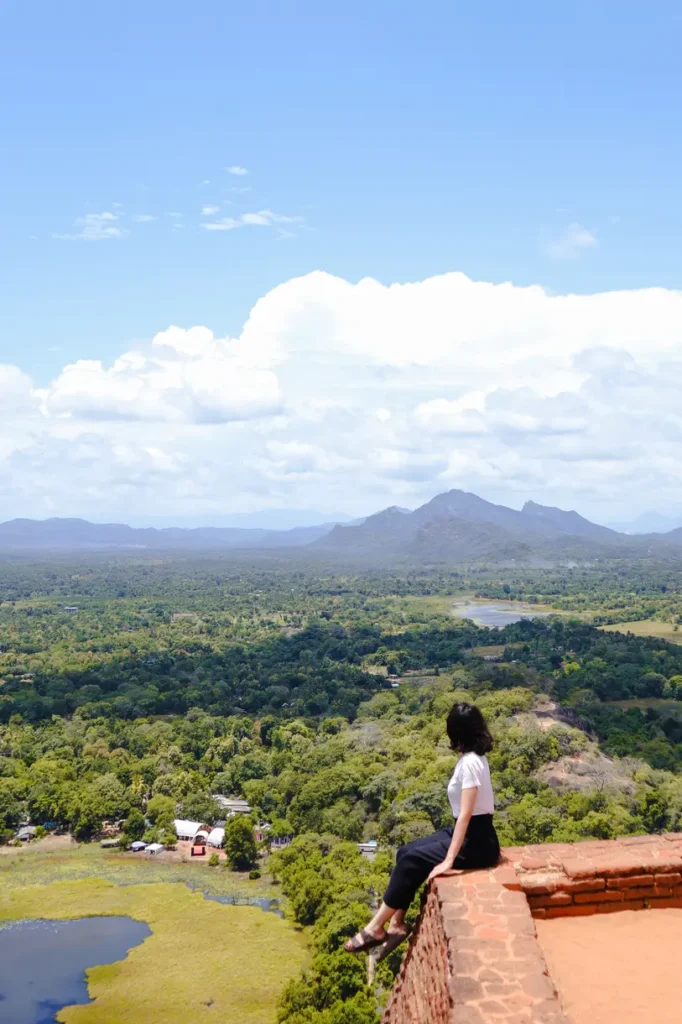
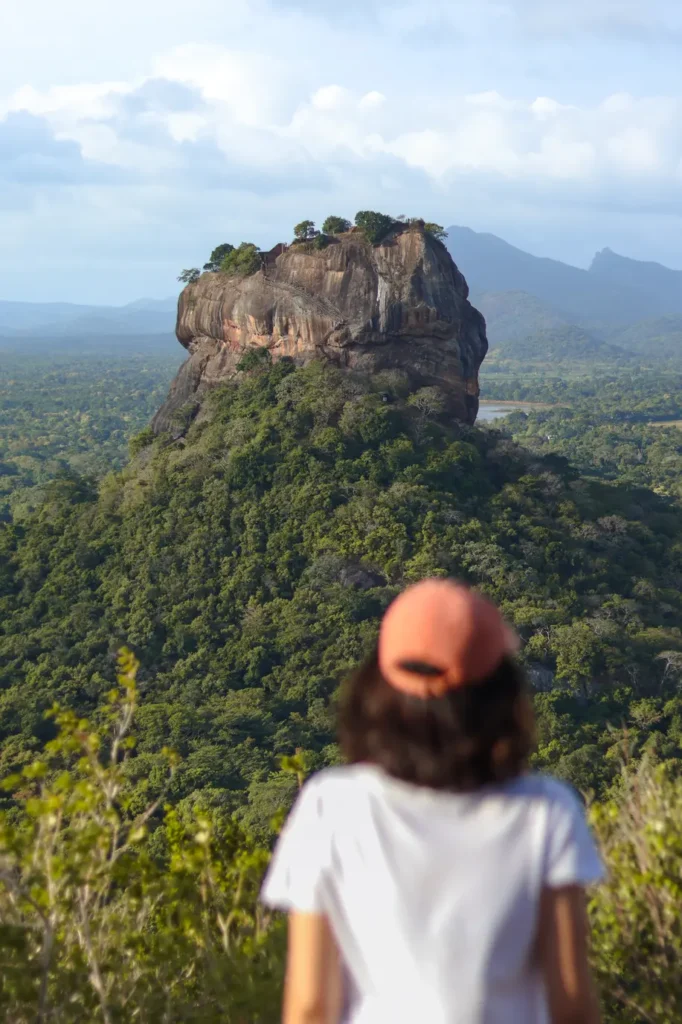
I made the mistake of starting one of my sightseeing days late morning… and instantly regretted it. I was sweating buckets, hiding in any patch of shade I could find, and barely had the energy to enjoy the place I was in.
Start your day at sunrise, take a break during the hottest hours (maybe with a fresh coconut in hand), and head back out in the late afternoon. It’s a simple habit, but it’ll keep you going strong day after day.
25. Travel insurance isn’t optional — it’s essential
Sri Lanka is generally safe, but unexpected things can (and do) happen — whether it’s a scooter accident, lost luggage, or getting sick after trying one too many street snacks. Having travel insurance gives you peace of mind so you can enjoy your trip without worrying about the “what ifs.”
I always travel with Heymondo, and I highly recommend it. Their coverage is reliable, affordable, and includes things like trip cancellations, medical emergencies, and even stolen gear.
If you’re still in the planning phase, you can get 5% off Heymondo if you book through my link. It’s a small step that can save you a lot of stress — and money — down the line.
26. Bring insect repellent with you — mosquitoes are everywhere
Mosquitoes in Sri Lanka aren’t just annoying — they can be a real problem. While the risk of dengue is relatively low in most tourist areas, it still exists, especially during the rainy season.
Pack a strong repellent (DEET-based or natural, your choice), and reapply if you’re sweating or standing near water.
27. Always wear sunscreen — the sun is intense year-round
Even on cloudy days, the UV index in Sri Lanka is no joke.
Whether you’re beach-hopping in the south or temple-hopping inland, sunscreen is non-negotiable. Go for something lightweight but strong (SPF 30+ at least), and don’t forget to reapply after sweating or swimming.
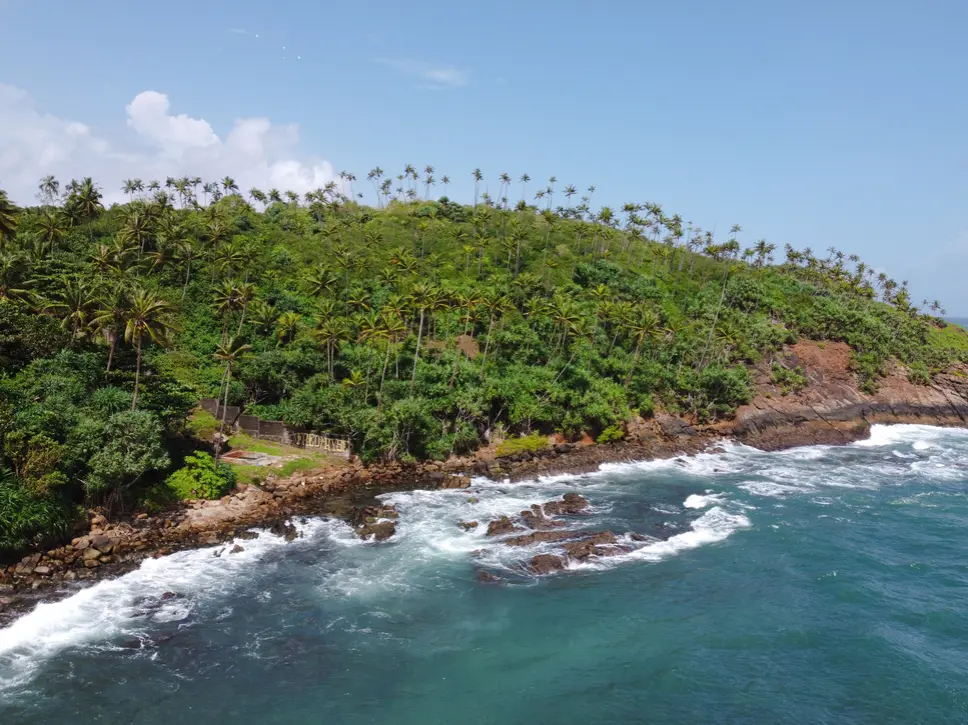
It’s a simple thing to pack, but it makes all the difference between enjoying your trip or spending the next few days hiding in the shade.
28. Don’t pet stray dogs or monkeys — even if they look friendly
Sri Lanka has a lot of stray animals roaming around — especially dogs and monkeys. They might look harmless, even cute, but it’s best to keep your distance.
Some strays are sweet, but others may carry diseases like rabies. Monkeys, in particular, are known to steal food and personal items — and they don’t mess around. When I visited Lion Rock, for example, they wanted to steal my ice cream.
As much as you might want that Insta pic, skip the animal selfies. This tip isn’t just about staying safe — it’s about respecting wildlife too.
29. Keep your distance from wildlife — including elephants and be safe driving at night
Seeing elephants in the wild is one of the most incredible parts of visiting Sri Lanka. But it’s important to observe them responsibly. Don’t approach them on your own or try to feed them — stick to guided safaris or national parks with trained rangers.

If you’re self-driving, especially in rural areas, be extra cautious at night. Visibility is low, roads may be poorly lit, and animals sometimes wander across highways. I avoided night driving completely after hearing a few scary stories.
Being aware of your surroundings and treating animals with respect is a key part of any good travel guide for Sri Lanka — and it’ll make your trip much more meaningful.
30. Is Sri Lanka safe? Yes — but stay alert and use common sense
Is Sri Lanka safe? In short: yes. I traveled around the country and people were friendly, helpful, and curious — in a good way.
That said, it’s still important to stay aware. Like anywhere, you’ll want to keep an eye on your valuables, especially in crowded places or on public transport. Be cautious when walking alone at night, and don’t flash expensive gear.
Most issues I encountered were minor — like tourist scams or pushy tuk-tuk drivers — but nothing dangerous. Follow your gut, use common sense, and you’ll be absolutely fine.
31. Avoid scams — especially involving tuk-tuks or “guides” at temples
One of the most frustrating things that happened to me was getting scammed on our first day in Colombo. A guy on the street convinced us to hop in a tuk-tuk for a quick temple visit — but the driver had other plans. We ended up on a mini city tour we didn’t ask for and paid 30€ for about an hour. Ouch.
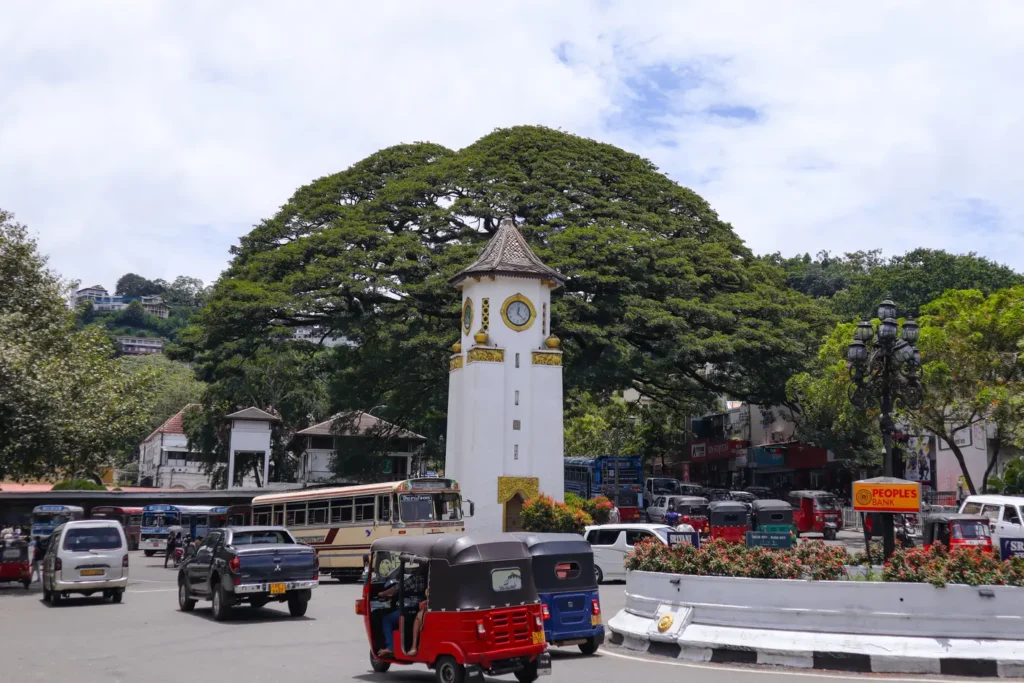
When you’re tired and jet-lagged, it’s easy to fall for these setups. Scams like this are pretty common in touristy areas, especially around temples or markets.
To avoid them, politely say no to unsolicited “guides” and use apps like PickMe instead of hailing tuk-tuks off the street.
32. Avoid traveling during Sinhalese and Tamil New Year (mid-April) unless planned
Sri Lanka’s New Year celebrations happen in mid-April, and while it’s a beautiful cultural experience, it can also throw a wrench into your plans. Shops and restaurants close, transport is limited, and trains and buses get booked out fast.
Unless you’re specifically planning to join in the festivities, it’s better to avoid traveling during this time. Accommodations may also fill up quickly or raise their prices due to local tourism.
If you do visit during this period, book everything in advance — and expect a slower pace. It’s not a dealbreaker, but it’s good to know ahead of time.
33. It’s hot and humid all year — pack breathable, quick-dry clothing
Whether you’re heading to the coast, inland, or even the hill country, expect heat and humidity. The tropical climate means you’ll be sweating — a lot.
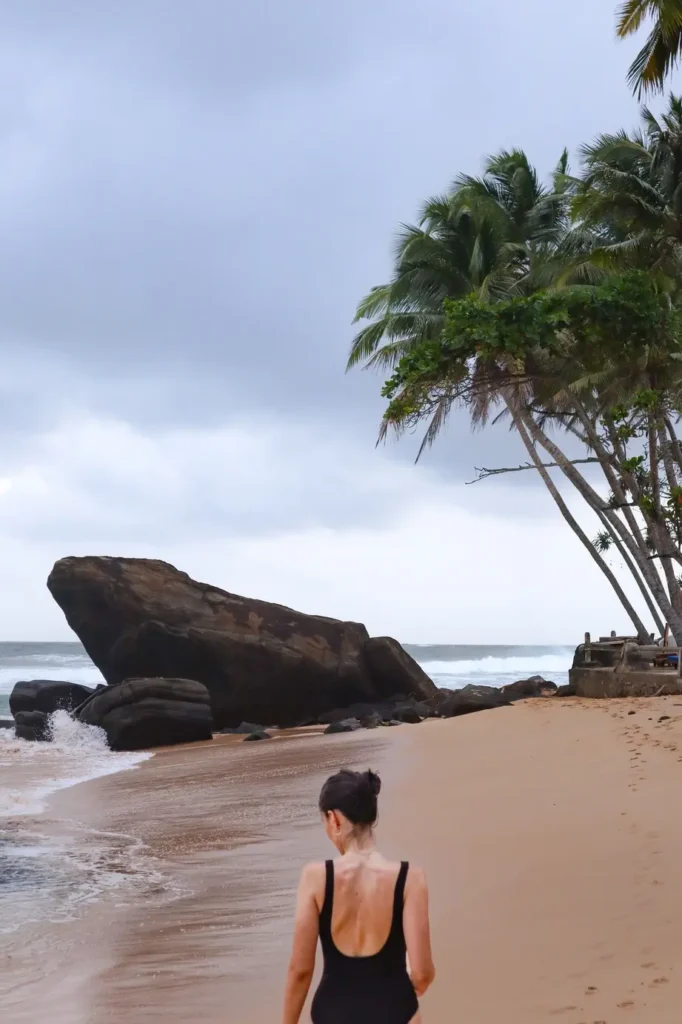
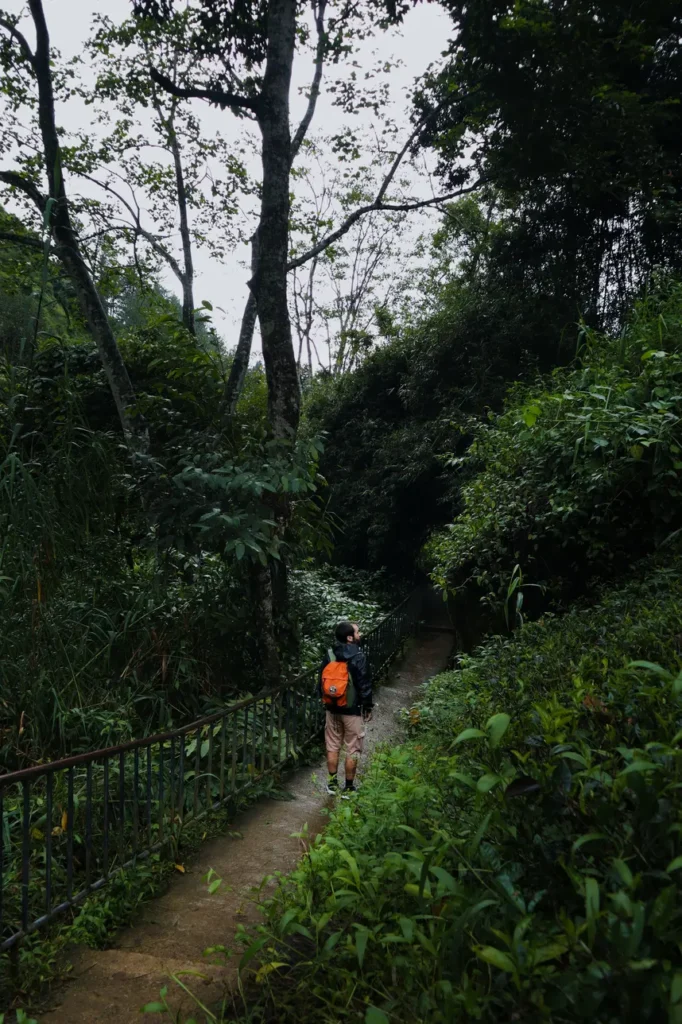
Lightweight, breathable fabrics are your best friend. Think cotton or linen shirts, loose trousers, and moisture-wicking clothes that dry fast. Avoid heavy jeans or tight athletic wear — they’ll just cling and trap heat.
Also, pack a lightweight rain jacket or poncho for sudden downpours.
34. Some parts of the country are a bit cold (Nuwara Eliya, for example)
While most of Sri Lanka is hot, there are exceptions — especially in the Hill Country. Nuwara Eliya, also called “Little England,” sits at a higher altitude and can feel downright chilly, especially in the early morning or evening.
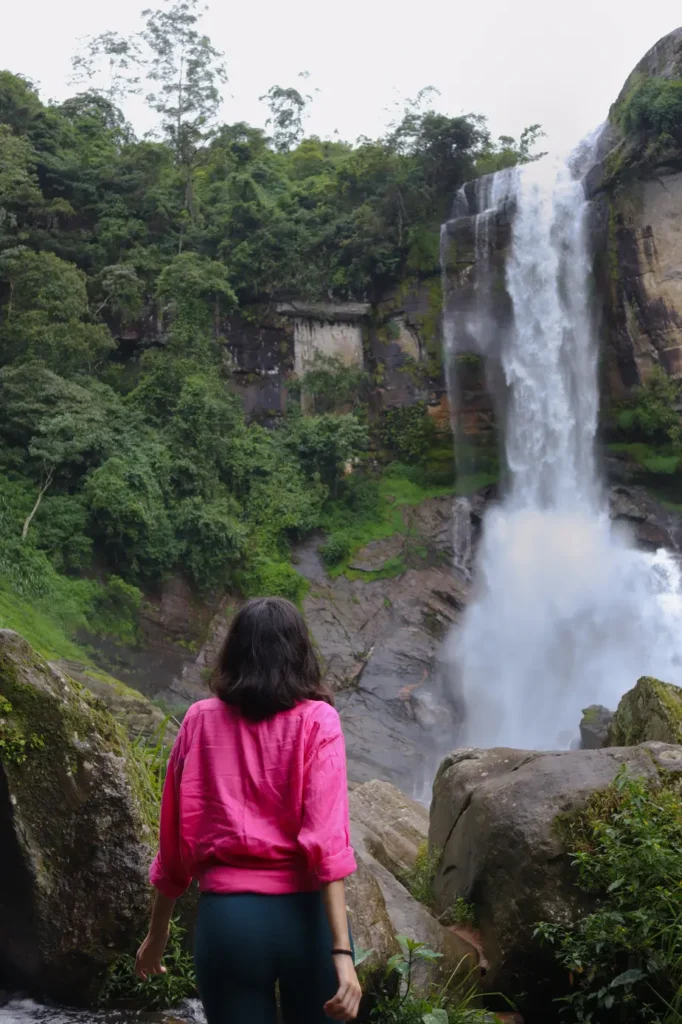
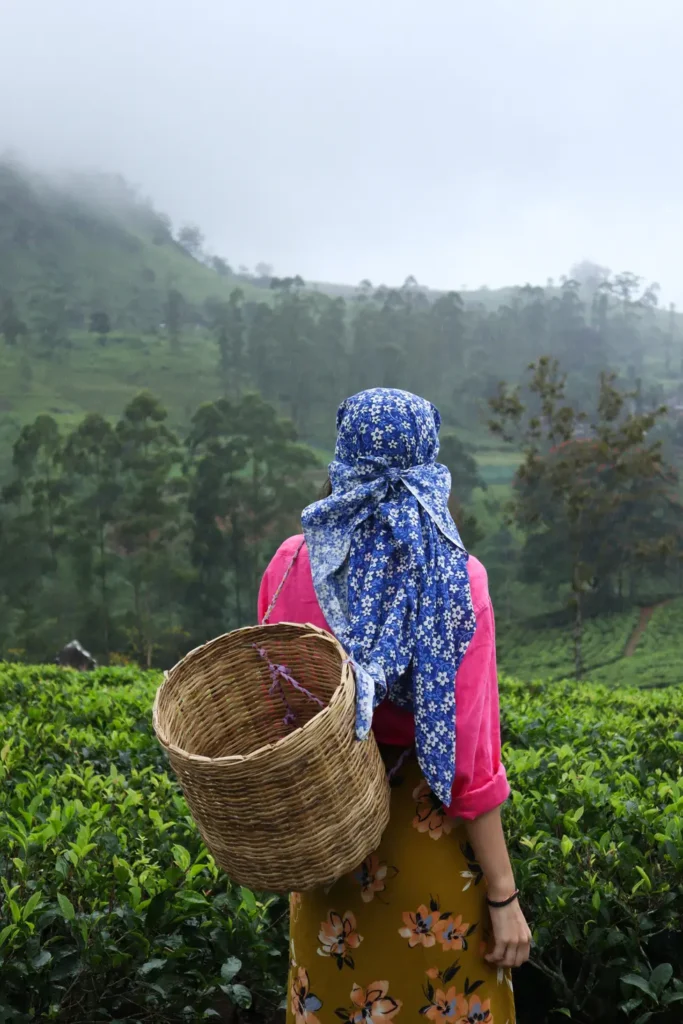
I was surprised by how cold it got. I ended up layering up with every long-sleeve item I had. A light jumper or fleece is enough, but it’s one of those things that’s easy to forget when packing for a tropical country.
If your itinerary includes places like Haputale or Nuwara Eliya, don’t skip a layer or two.
🎫 Thinking about adding the hill country to your itinerary? Don’t miss my post on whether Nuwara Eliya is worth visiting — I spill all the pros and cons!
35. Don’t expect Western-style toilets everywhere — carry tissues
Let’s be real: bathrooms in Sri Lanka can be a bit hit or miss. In cities and nice accommodations, you’ll usually find Western-style toilets. But once you’re on the road — especially in bus stations, local restaurants, or remote areas — you’ll likely come across squat toilets.
These aren’t necessarily bad, just different. Also, expect a lack of toilet paper. It’s just not a thing in many local places, so carrying your own tissues or travel wipes is a game-changer.
A small packet takes up no space and can save you from some seriously awkward moments. Trust me, you’ll thank yourself for packing it.
36. Be flexible — transport delays, changes in plans, and slow service are all part of the experience
One of the best Sri Lanka travel tips I can give you? Learn to go with the flow. Trains run late, buses skip stops, restaurant service might take longer than expected… and that’s just how it is. Nothing runs on a strict schedule here — and the sooner you accept that, the better your trip will go.


I often get frustrated when things don’t go to plan. But honestly, I’m starting to realize the best moments often come from unexpected changes.
Being flexible doesn’t mean giving up on structure — it just means allowing space for surprises. And in Sri Lanka, surprises often turn into the best stories.
37. Don’t skip Colombo — it’s chaotic, but full of life
Most travelers land in Colombo and head straight out — and I get it. The capital is loud, messy, and overwhelming at first glance. But if you give it a day, it might surprise you.
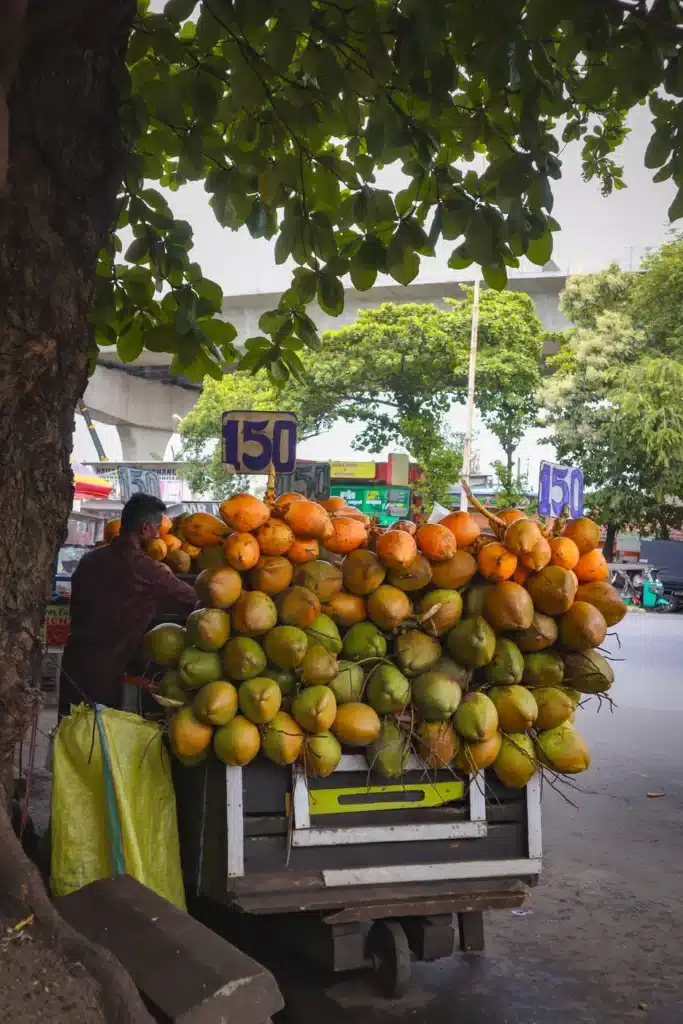
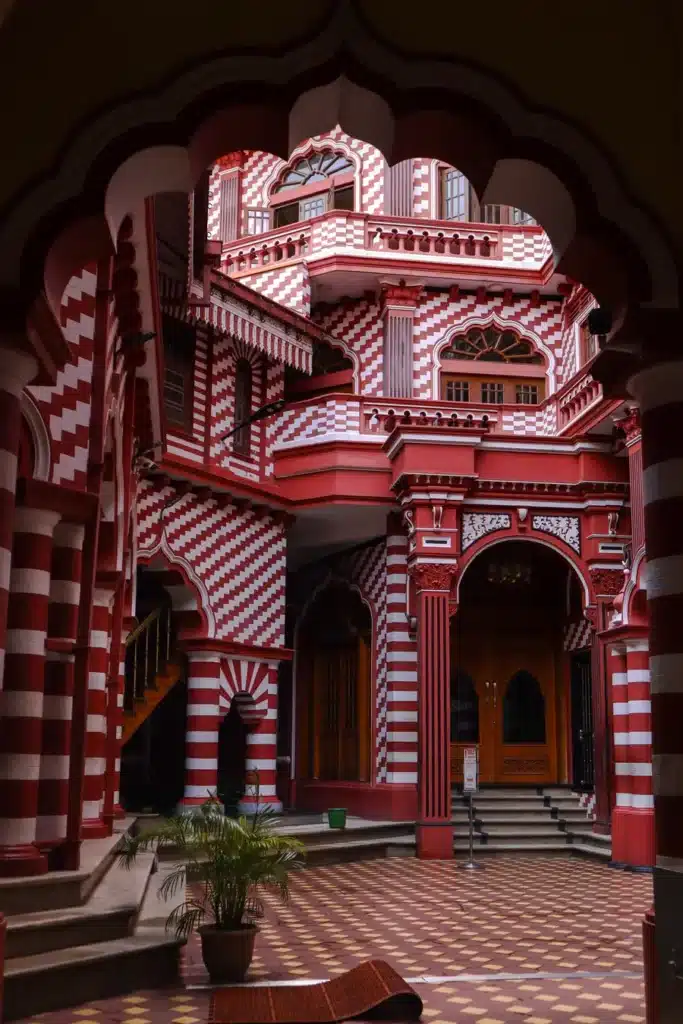
There’s color, street food, temples, colonial buildings, and some great local markets. I spent a full day walking around and actually had a blast — it felt raw and real, totally different from the beach towns or hill country.
So don’t skip it completely. Even 24 hours in Colombo gives you a taste of the everyday energy in Sri Lanka. It’s not polished — but that’s part of what makes it memorable.
🎫 Spending a day in the capital? Check out my 1-day Colombo itinerary for the best places to visit, eat, and explore without the stress.
38. Renting a tuk-tuk is the best way to get around
If you’re feeling adventurous, rent a tuk-tuk. It’s hands-down one of the most fun and freeing ways to explore the country. You’ll be on your own schedule, cruising past tea fields, stopping at waterfalls, and waving to locals along the way.
You’ll need to apply for a temporary driving permit (many rental companies do this for you), and most rental companies offer a quick driving lesson if you’re new to tuk-tuks. Just know: the roads are wild, and you’ll need to stay alert — but that’s part of the adventure.

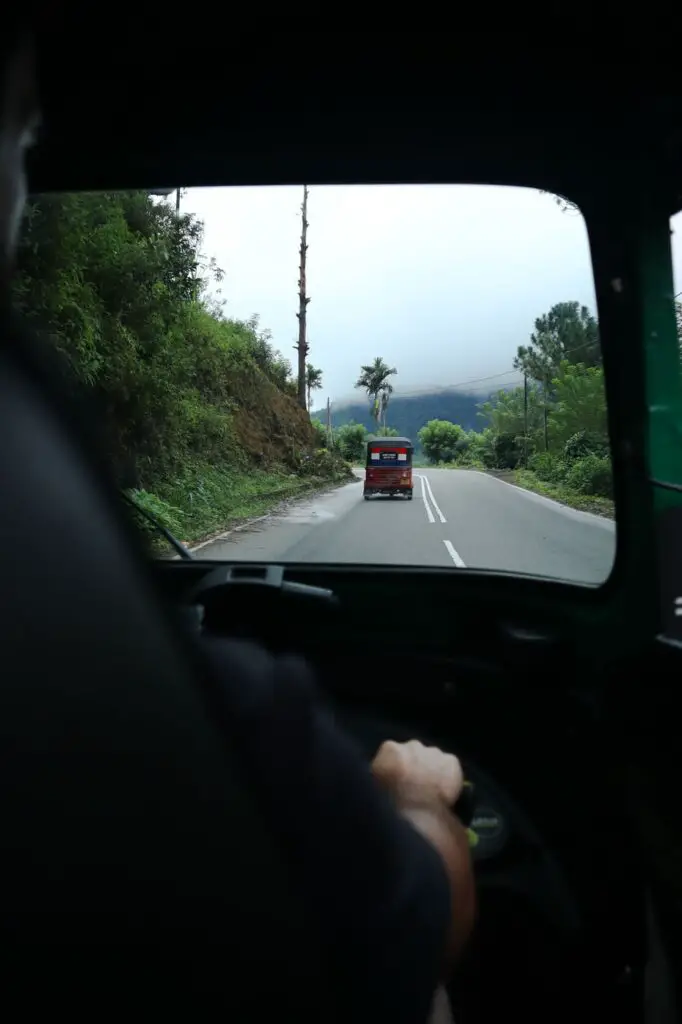
I rented mine with Tuktuk Rental and genuinely loved their service — they were reliable, professional, and super helpful throughout the process.
If you’re curious about how it all works, I’ve written a full guide on how to rent a tuk-tuk in Sri Lanka. Bonus: you’ll also get a special discount if you use the code ATICKETTOTAKEOFF!
Driving around in my own tuk-tuk gave me a whole new perspective on how to get around Sri Lanka. It was hilarious, challenging, and unforgettable.
39. Bus drivers drive like crazy — be cautious, especially when crossing the road
Buses in Sri Lanka don’t just drive — they fly. These things barrel down the road like they’re racing in the Grand Prix, weaving through traffic, honking constantly, and barely slowing down for passengers.
Crossing the road near a bus stop? Double-check both directions — even if it’s a one-way street. If you’re renting a scooter or tuk-tuk, always give buses extra space. They rarely yield, and getting in their way is not a fun time.
It’s one of those things that seems chaotic, but you’ll get used to it — just don’t let your guard down. Safety first, always.
40. The train ride from Kandy to Ella is just as amazing as they say
You’ve probably already heard about the train ride from Kandy to Ella — and I’m here to confirm: yes, it really is that stunning. Think tea plantations, mist-covered hills, old stone bridges, and locals selling snacks from the windows.

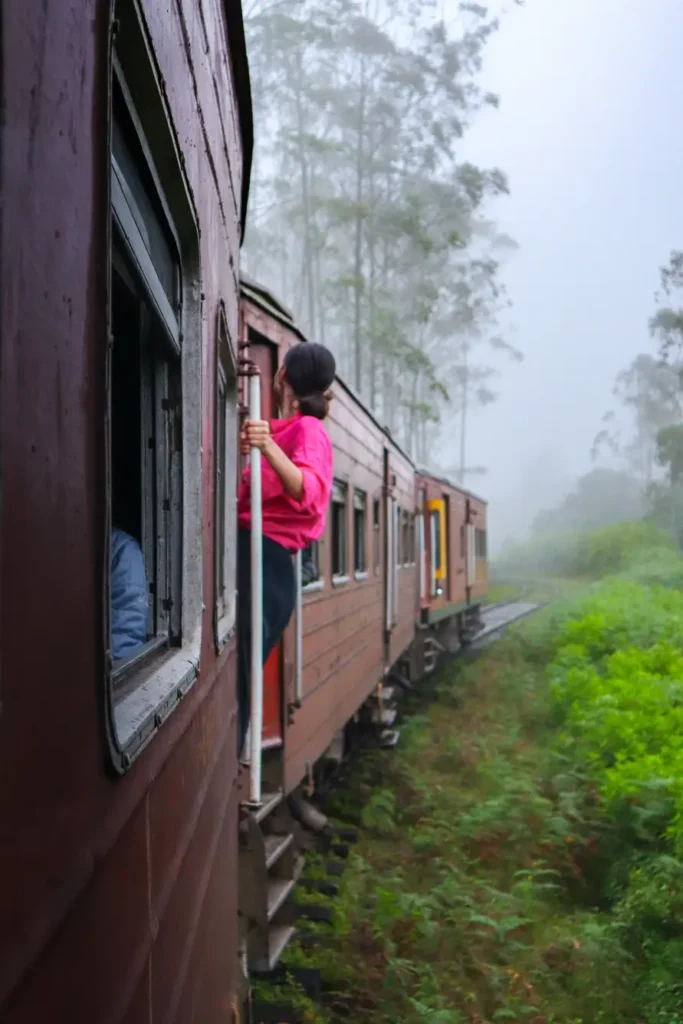
The full ride is long (about 6–7 hours), but you can do only parts of it, which is also incredible. I couldn’t stop taking photos — or sticking my head out the door just to take it all in.
Final thoughts on how to plan a trip to Sri Lanka
If you’ve made it this far — you’re more than ready to start planning a trip to Sri Lanka with confidence.
From figuring out transportation to understanding cultural norms, knowing what to expect makes your journey so much smoother (and way more enjoyable).
These Sri Lanka travel tips are based on real experiences — the good, the funny, and the mildly chaotic. Hopefully, they help you avoid some common mistakes and soak up the best parts of this amazing country.
Got a question I didn’t cover? Or maybe you’ve already been and have a tip of your own? Drop a comment below! I love hearing your stories, answering questions, and helping fellow travelers make the most of their trip!
Disclaimer: this post may contain some affiliate links, which means I get a small commission if you buy something through my links. This doesn’t represent any additional cost to you and you’ll be supporting my work here on the blog😊

